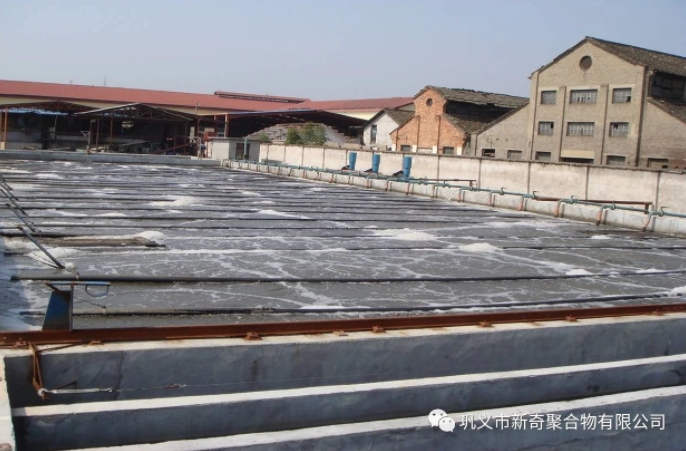Micro-electrolysis technology is currently an ideal process for treating high-concentration organic wastewater, also known as internal electrolysis. In a nutshell, it uses the 1.2V potential difference generated by the micro-electrolysis material filled in the wastewater to electrolyze the wastewater without electricity, so as to achieve the purpose of degrading organic pollutants.
When the system is connected to water, countless micro-battery systems will be formed in the equipment, forming an electric field in its action space. The new ecology [H], Fe2 +, etc. generated during the treatment process can undergo redox reactions with many components in the wastewater, such as destroying the chromophore or auxochrome groups of colored substances in colored wastewater, and even breaking the chain to achieve the effect of degradation and decolorization; the generated Fe2 + is further oxidized to Fe3 +, and their hydrates have strong adsorption-flocculation activity, especially after adding alkali to adjust the pH value to generate ferrous hydroxide and ferric hydroxide colloidal flocculants. Their adsorption capacity is much higher than that of ferric hydroxide colloids obtained by hydrolysis of general reagents, and can adsorb a large amount of dispersed microparticles, metal particles and organic macromolecules in water.
From this point of view, its working principle is to treat wastewater based on the combined effects of electrochemistry, oxidation-reduction, physical adsorption and flocculation precipitation.
However, the materials used in micro-electrolysis process are divided into traditional and non-traditional.
Traditionally, the micro-electrolysis materials used in micro-electrolysis process are generally iron filings and charcoal. Acid and alkali activation is required before use. It is easy to passivate and harden during use. Because iron and charcoal are in physical contact, it is easy to form an isolation layer between them, which makes micro-electrolysis unable to continue and lose its function, which leads to the need to frequently replace micro-electrolysis materials.
So, what is micro-electrolysis suitable for?
Understanding the development history, we can see that micro-electrolysis has been widely used in wastewater treatment such as printing and dyeing, heavy metals, pharmaceuticals, and oilfield wastewater in the past 20 years; especially for the treatment of wastewater with high salinity, high COD and high chromaticity.
1. Direct drainage from workshops: COD concentration is high, highly volatile, poor biodegradability, and highly biotoxic. It is difficult to train and cultivate biological bacteria directly when entering biochemical treatment, resulting in poor treatment effect of the biochemical system;
2. Deep treatment of biochemical effluent: Many chemical and pharmaceutical companies enter biochemical treatment after preliminary water distribution and increased biochemical processes. The final effluent COD ranges from several hundred to more than one thousand, and the B/C value is less than 0.1, which is basically non-biodegradable;
3. Organic phosphorus agricultural wastewater, organic chlorine agricultural wastewater

